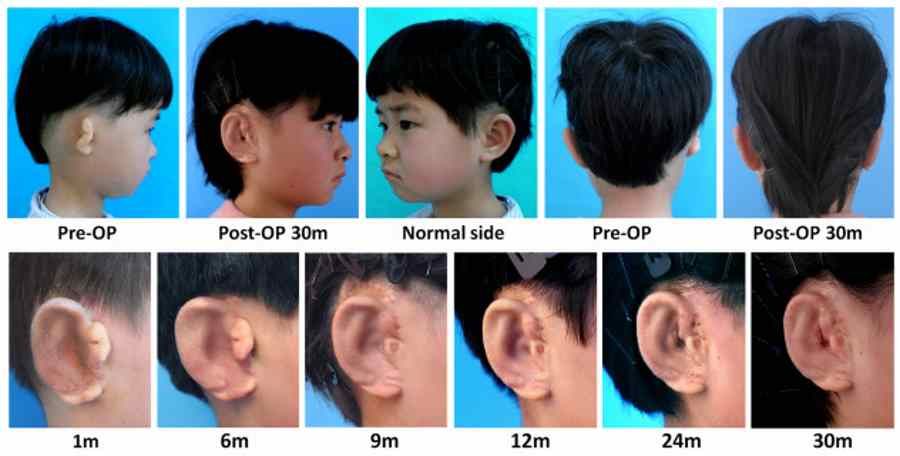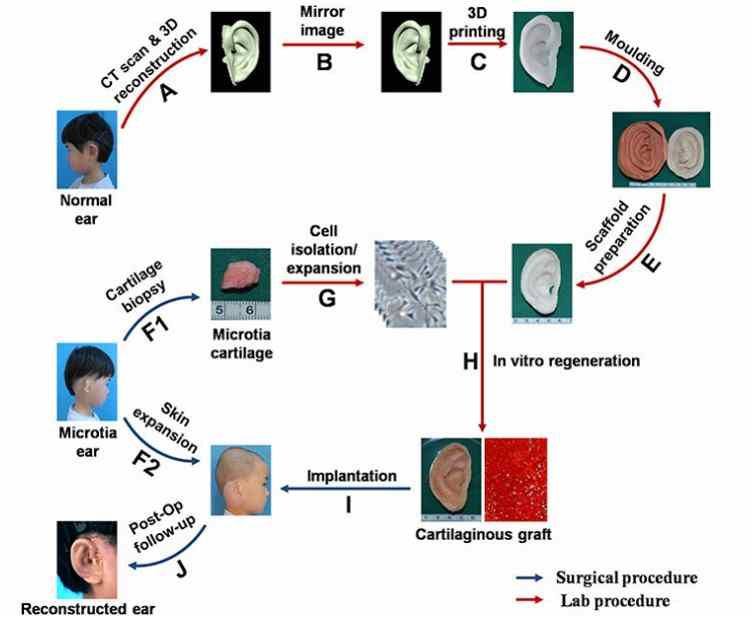
Chinese scientists grew new ears for children
Microtia is a congenital deformity of the ear. It is a rare disease and is accompanied by an underdeveloped j hearing. To date, treatment has consisted of multiple surgical interventions, which took re not always successful. However, a new method of treating the disorder was developed in China.
In children who The cases were described in the pages of „EBioMedicine”, There was a unilateral ear deformity. The second ear developed normally, which helped scientists create accurate models of ears that re then used to replace the deformed organs .
The first patient was a girl who ra was six years old when the therapy began. Now, 2.5 years after treatment began, has nothing The ears have been healing and have not suffered any serious effects in side.
Researchers have been conducting experiments for years using their own com rec of the body combined with a structural scaffold to create sophisticated and functional replacements for human organs. Described by Chinese researchers method is the first, in which rej human cartilage modeled into the shape of an ear was grown in vitro (outside a living organism) and then surgically implanted in.

Team ł specialist in from tissue engineering and surgery plastic surgeons initially performed a detailed lated tomographic images of each patient’s healthy ear. Then, with software that allows you to create mirror images, a model of an underdeveloped ear was created, which ry was printed in 3D technology.
From the model thus obtained, the mold was cast. A biodegradable polymer (PGA) framework was built inside the mold, which ry was to strengthen the new ear by providing it with the right shape.
Chondrocytes – com rki of cartilaginous tissue, were taken from healthy developing patient ears. Then the com rks were reproduced. When their number was sufficient, they were inserted into molds and incubated. Over time, natural com The molds were replaced by an artificial scaffold. In the end, new ears were implanted.

Photo. Zhou et al./EBioMedicine
All children who re received treatment, were monitored for a period of 2.5 years. At that time in two jki of them, plastic surgeons made minor adjustments because the ears had not taken the proper shape. Experts say, however, that it will be necessary to monitor the condition of the new ears for a longer period of time – Up to five years to make a definitive judgment on whether the treatment was successful. In one of the children, the procedure in og le failed. The proliferation of cartilaginous tissue has failed.
This kind of technology is several years old, but this is the first time it has been used so effectively in humans – the first of these implants were implanted 30 months ago, suggesting that the long-term prospects are good.
– This work clearly demonstrates that tissue engineering in the reconstruction of the ear and other cartilaginous tissues wkr tce will become a reality. The aesthetics of the produced tissue are at the level one would expect from the best clinical procedures – acknowledged in an interview with CNN Lawrence Bonassar of Cornell University in New York City.
Although the technique needs further refinement, early results are a promising step forward d in the field of reconstructive medicine.


